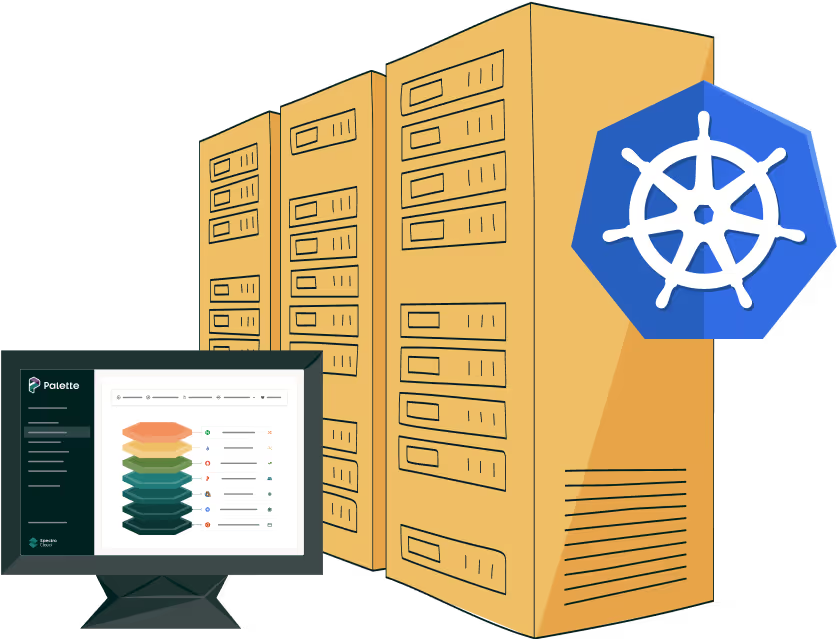Run Kubernetes on bare metal
Bare metal Kubernetes is ready for prime time. Let us help you deploy your clusters to bare metal servers as easily as to the cloud.


Get on the cutting edge in just one hour
Watch this webinar on demand to see the latest in bare metal Kubernetes, in partnership with our friends at Canonical.
Why bare metal Kubernetes?
Our research found that 1 in 5 Kubernetes users are already running on bare metal today in their private clouds and data center environments. Why?
Directly deploying and running Kubernetes on top of physical resources instead of virtual servers means one technology layer less to manage: the hypervisor.
Eliminating the hypervisor with bare metal servers can offer:

“Leaning on Spectro Cloud enabled us to move quickly into bare-metal hosting reducing the up front complexity, maintenance, and knowledge requirements. They collaborated as an extended part of the team to help us achieve a quick migration that resulted in significantly lower operating cost for our Kubernetes clusters. It’s also great having extra Kubernetes expertise on hand when issues arise.”
Super League Gaming is all-in on bare metal Kubernetes
Palette user Super League Gaming hosts up to 15,000 concurrent Minecraft players on a single massive bare metal Kubernetes cluster. They trust the infrastructure to perform when every millisecond counts.
The OS challenge
But deploying Kubernetes on dedicated servers is a challenge, especially at scale. And it’s all to do with the OS.
When you’re running Kubernetes on cloud services in the public cloud, or in a virtualized data center, the infrastructure is ready and waiting for your Kubernetes installation.
With bare metal, you have to install an OS on every server to get it ready for the Kubernetes stack on top. And most Kubernetes management platforms have no visibility of the OS they sit on, so you have to manage the OS separately.
This can expose you to configuration drift that can impact performance and availability, besides increasing the operational hassle.





Treat your bare metal clusters just like any other clusters
With Palette, your bare metal servers’ operating system is just another layer being managed by our platform. You can take advantage of all our comprehensive lifecycle management features, from monitoring to patching.
This is what true “full-stack” means: everything automated and managed, from the OS, to the K8s infrastructure and add-on application services.
Powered by cutting-edge open source projects
To make this happen, Palette extends the CNCF’s Cluster API (CAPI). Using CAPI, Palette manages all your clusters in a declarative way: you define what your clusters should look like and Palette ensures they always stay that way, consistent against the declarative profile via continuous reconciliation.
We built an open-source integration between Cluster API and Canonical’s MAAS product, which automates bare metal server provisioning from start to finish, including everything from storage and network discovery to hardware testing and OS imaging.
Together, Palette, CAPI and MAAS mean you can treat your bare metal data center like a cloud!
Meet MAAS
Canonical MAAS, or Metal As A Service, manages the lifecycle of bare metal machines and provides a clean and flexible API to do so.
It allows you to easily install, upgrade, and rebuild servers, providing them with an operating system such as Ubuntu, from scratch.
This means you can programmatically manage your bare-metal servers, enabling you to provision, decommission, track inventory, test, and maintain your bare metal cloud.
Find out more about MAAS at: https://maas.io/


How to slash on-prem costs with Cluster API and MAAS for bare metal K8s.
Learn how we help you run K8s on bare metal

Take your next step
Unleash the full potential of Kubernetes at scale with Palette. Book a 1:1 demo with one of our experts today.



